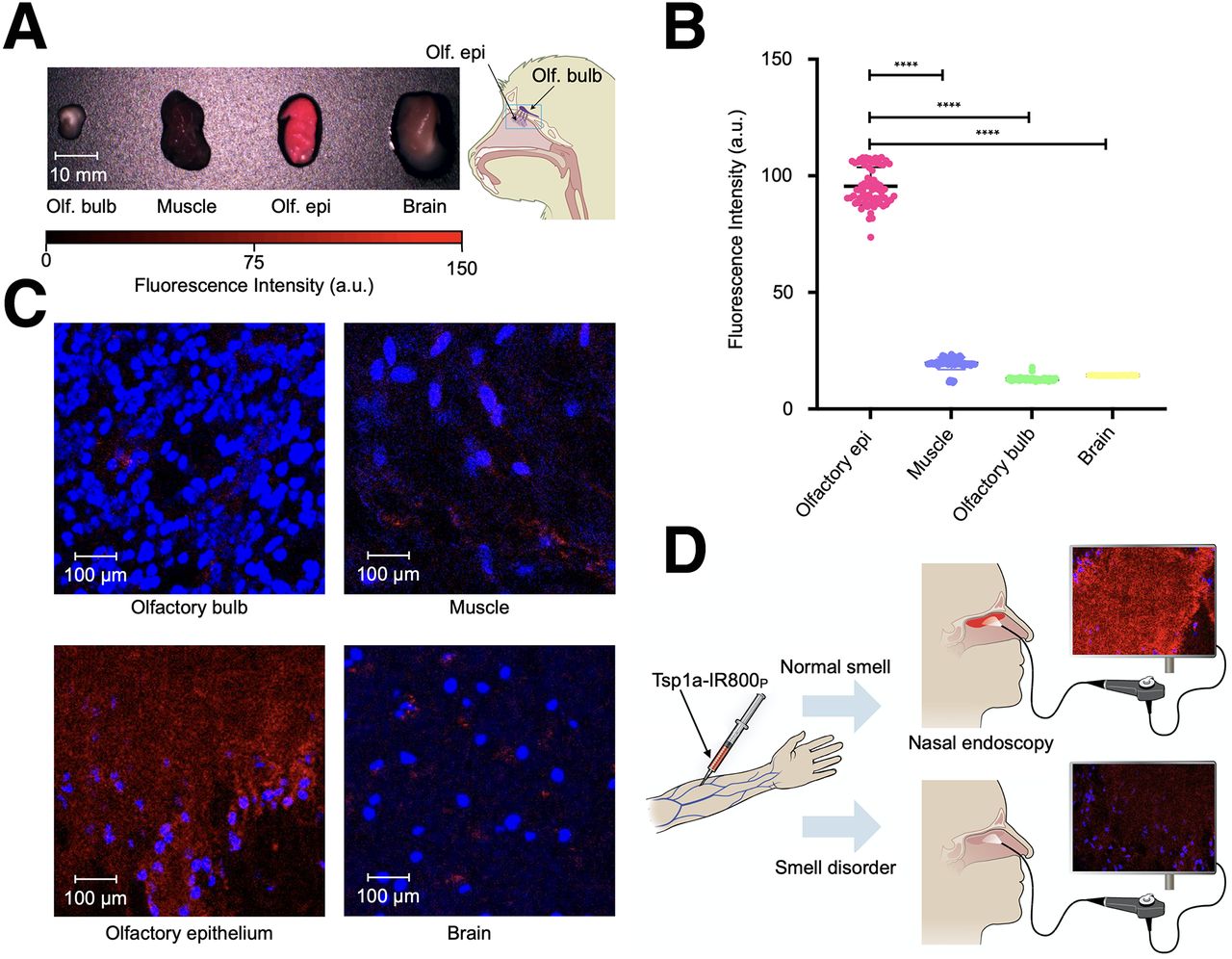Molecular Imaging Tool Objectively Measures Anosmia
Images

For the first time, a new fluorescent imaging probe can objectively and non-invasively measure loss of smell, clinically known as anosmia. Targeting the olfactory nerve, the new tool has potential to eliminate biopsies used to diagnose certain anosmia conditions and to aid in the development of therapeutic interventions. This research was published in the August issue of The Journal of Nuclear Medicine.
Research shows that an estimated 13.3 million adults in the United States have a vast range of smell disorders and that 3.4 million endure severe hyposmia or complete anosmia. However, these studies were performed before the COVID-19 virus pandemic and therefore severely underestimate people currently with smell disorders.
“Despite the fundamental importance of the sense of smell in the quality of life and the high prevalence of anosmia, no objective, user-independent methods to assess the perception of smell is currently available either clinically or for use in human or research animal settings,” noted Dauren Adilbay, MD, assistant professor in the Otolaryngology/Head and Neck Surgery Department at the Medical University of South Carolina, in Charleston, South Carolina. “We sought to investigate a novel way to diagnose loss of smell using a special fluorescent imaging agent, Tsp1a-IR800P.”
Tsp1a-IR800P targets sodium channel 1.7 (NaV 1.7), which plays a critical role in olfaction by aiding the signal propagation to the olfactory bulb. To determine the expression of NaV 1.7, researchers conducted Tsp1a-IR800P imaging of mice with normal smell, mice with chemically-induced anosmia. Additional imaging studies were performed on olfactory epithelium tissues of non-human primates. Olfactory epithelium of COVID-19 infected hamsters and human cadavers of patients previously diagnosed with COVID-19 and succumbed to disease were also imaged.
NaV 1.7 was found to be abundantly expressed in subjects with a normal sense of smell, while in subjects with anosmia the expression of NaV 1.7 was significantly diminished, as shown by the fluorescence signal. Lowering of signal intensity that is proportional to the degree of damage was also noted, meaning that lower fluorescent emissions/signal may indicate loss of smell and that higher fluorescent emissions/signal may indicate treatment response and smell recovery.
Study authors noted that this fluorescent imaging agent has potential to be used in the physician’s office setting with an endoscope to diagnose smell disorders. It can also be immediately applied to preclinical studies in animal models (where objective and non-invasive tools do not exist) to evaluate the efficacy of pharmacological interventions that restore sense of smell and thereby aid in development of novel therapeutics.
“Early-stage detection of smell disorders can potentially lead to timely interventions that can treat the disease or minimize disease progression and thereby contributing to improved quality of life for the patients,” said Naga Vara Kishore Pillarsetty, PhD, professor in the Department of Radiology at Memorial Sloan Kettering Cancer Center in New York, New York. “This innovation could lead to the development of similar imaging agents for other sensory and neurological disorders, broadening the scope of molecular imaging.”